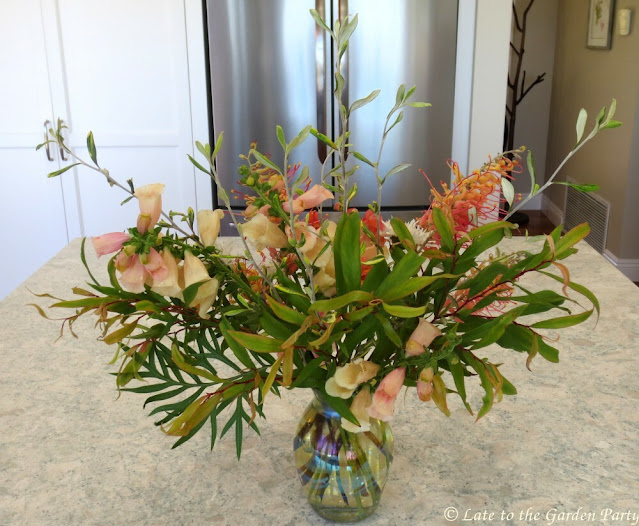Another unexpected chore sidetracked my plans in the garden mid-week. A glance at our latest water bill on Tuesday evening showed that we'd used 150% of the amount used during the same period last year. As we hadn't done anything in the last month to explain that, it indicated a breakdown somewhere in our irrigation system. After working diligently to conserve water, I was anxious to start our evaluation first thing Wednesday morning but Mother Nature threw us a curveball in the form of a thunderstorm.
Thunder rumbled for a few hours and there were periodic flashes of lightning. I have a bad habit of ignoring both but better sense prevailed this time.
 |
A friend reminded me that it was best to avoid outside areas when lightning strikes were ongoing
|
 |
A woman walking her dogs in Pico Rivera to the east of us was killed, along with her 2 dogs, by a lightning strike associated with that same thunderstorm Wednesday morning
|
When the thunder and lightning stopped in late morning, we checked the water meter and discovered that little blue wheel that indicates that water is running was slowly spinning. My husband started turning off water valves in an effort to isolate the area of the leak. We identified the main line from the street as the likely suspect and started looking for wet areas. My husband noticed what appeared to be standing water in an area adjacent to the neighbor's driveway under one of our hedges. The problem was more obvious when we viewed it from neighbor's side.
 |
It was evident that the soil was saturated
|
My husband cut away some of the shrub foliage, moved the chimenea and pots I had in the area, and started digging while I contacted our neighbor, who was out of town at the time of our discovery.
 |
The chimenea and pots formerly sat at the end of the flagstone path in front of the hedge
|
 |
Removing the soil from the area around the pipe created a miniature pond
|
 |
The pipe couldn't be evaluated or repaired without turning off the water
|
When we realized we couldn't turn off the city's water line, we started reaching out to plumbers. The best option we were able to arrange was a slot almost one week out. My husband suggested that I could scoop water from our new "pond" to water the garden. I tried that but, after the pond refilled almost immediately every time it was anywhere near empty, I was worried about leaving things as they were for a week. I leapt several hurdles after that to expedite service that I won't bore you with. The plumbers arrived Thursday morning. Unfortunately, they weren't able to turn off the city's line either. Although I'd requested assistance from the water service administrator to turn off the city's line on Thursday morning, the service provider was delayed by more than two hours. However, once the city line was off, everything went more smoothly than I'd anticipated.
 |
The little water spout you can see in spurting from the middle of the pipe in this closeup photo is the result of what's called a pin-hole leak. Given the sheer amount of water pooling up in the area, I was surprised there wasn't a larger break.
|
 |
A pile of heavy wet mud was left behind
|
 |
The pipe after repair
|
Based on one prior experience with a pin-hole leak, it could take two or more weeks for the soil to dry out so we can put everything back. My husband and I need to wrangle with the cost versus benefit of replacing the copper pipe all along the main line. How much of the garden would have to be dug up is a significant factor but so is the water wasted with each of these events. With a house more than 70 years old, this kind of unpredictable surprise could very well happen again, wiping away the gains I make in conserving water in one fell swoop.
On a more positive note, the neighbor commented on how nice the plants along her driveway are looking with all that extra water.
May your weekend be free of unpleasant surprises.
All
material © 2012-2022
by Kris Peterson for Late to the Garden Party























































